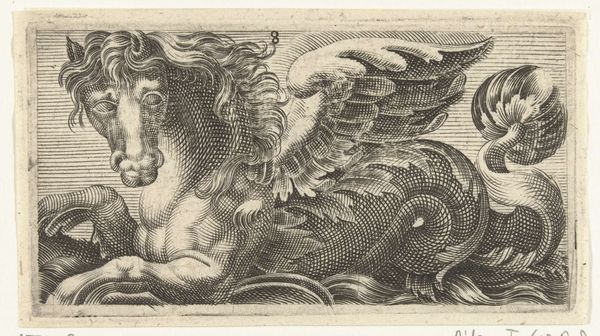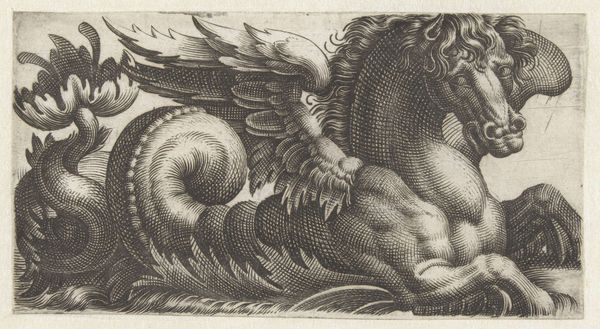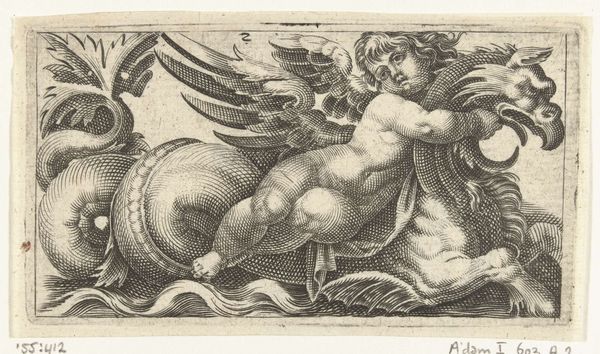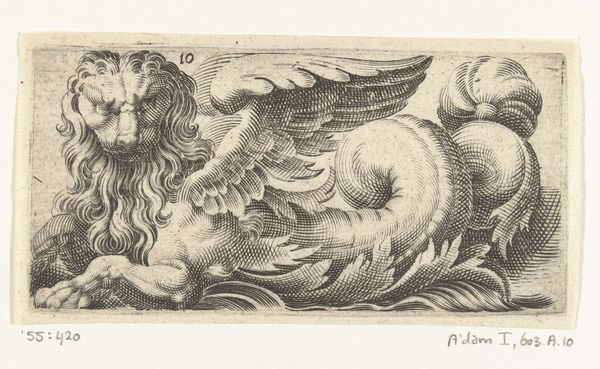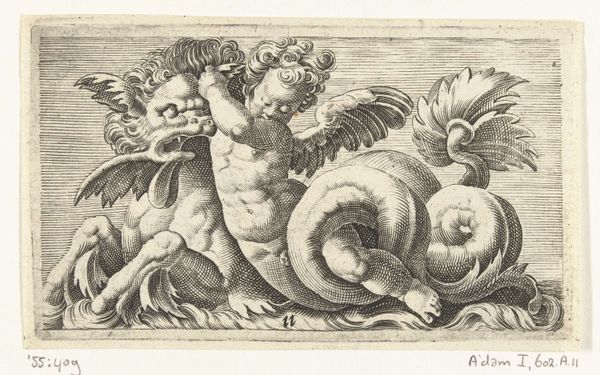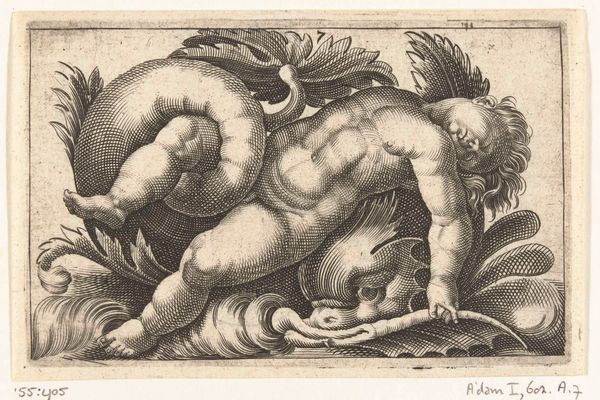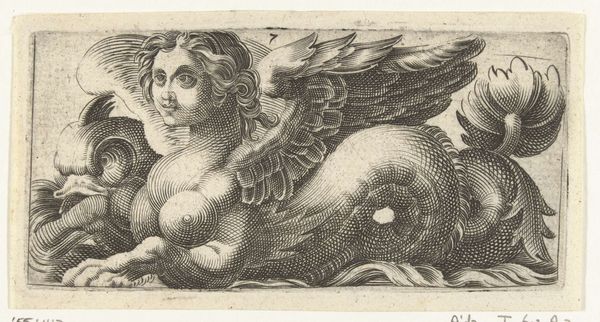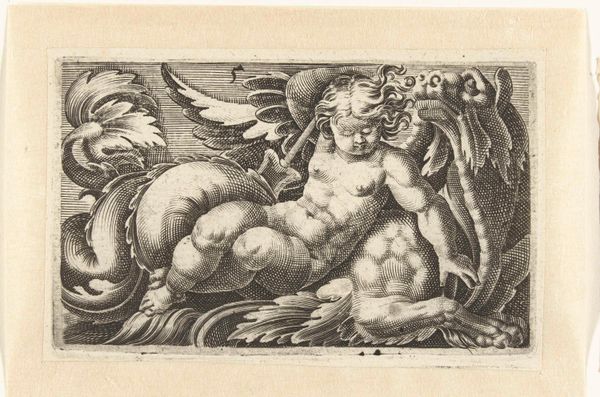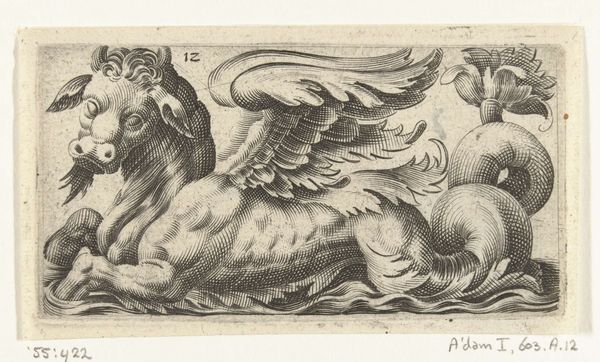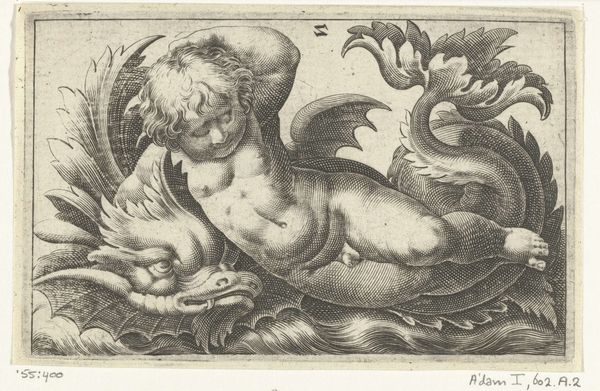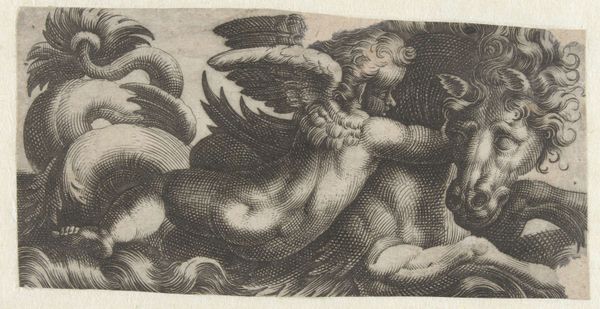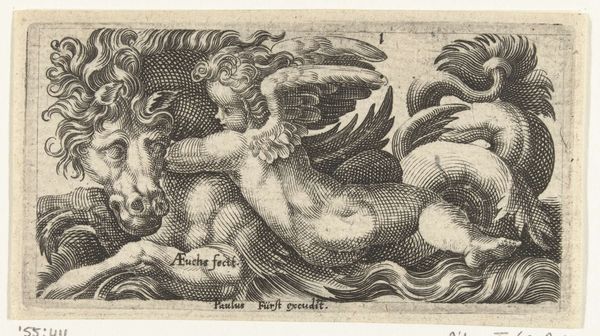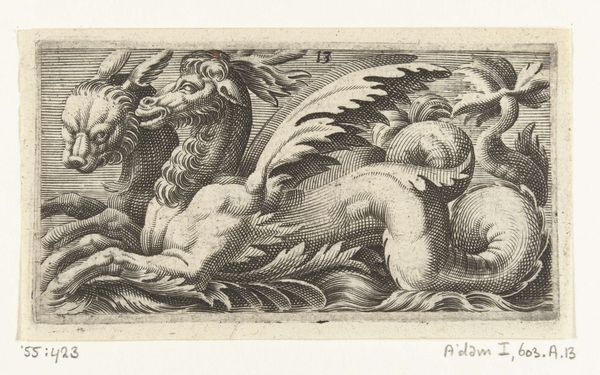
Gevleugeld zeepaard met aan het einde van zijn staart een open blad waaruit twee stampers steken 1526 - 1606
0:00
0:00
adamfuchs
Rijksmuseum
print, engraving
# print
#
old engraving style
#
fantasy-art
#
figuration
#
11_renaissance
#
ancient-mediterranean
#
engraving
Dimensions: height 59 mm, width 107 mm
Copyright: Rijks Museum: Open Domain
This "Gevleugeld zeepaard" (Winged seahorse) was made by Adam Fuchs around 1600, using the technique of etching. The etcher's art lies in the controlled erosion of metal. First, a copper plate is coated with a waxy, acid-resistant ground. The artist then scratches an image into the ground, exposing the metal. When the plate is submerged in acid, the exposed lines are bitten, creating grooves. Ink is then applied, filling these grooves, and the plate is pressed onto paper. The process demands meticulous skill, both physical and chemical. The depth of the lines, the darkness of the print, all depend on timing and control. This particular print likely served as a design source for other artisans. Imagine a goldsmith, ceramicist, or cabinetmaker, all taking inspiration from this page. By understanding the handiwork involved, we recognize the true value and cultural significance of prints like these, and challenge the hierarchy between fine art and craft.
Comments
No comments
Be the first to comment and join the conversation on the ultimate creative platform.
